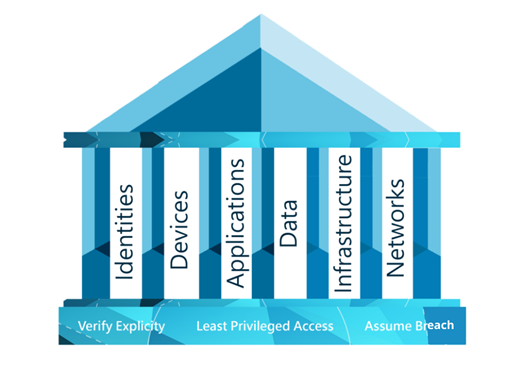
£230million. At its worst, that’s how much last winter’s weather was *estimated to cost UK small-medium businesses in a single day. A frustrating **two-fifths of those businesses are now likely to fail in the next two years. A cloud backup and Disaster Recovery solution can stop this happening to your organisation. Here’s how.
“It is only in sorrow bad weather masters us; in joy we face the storm and defy it”~ Amelia Barr
According to telecoms provider, Daisy Group plc, nearly a third (31%) of UK businesses have been affected by bad weather over the last two years. Transport problems, power cuts or broadband and phone line failures are all to blame. Last year, bad weather prevented an estimated three million UK workers from completing their normal work responsibilities.
That’s a pretty gloomy picture, right?
But it doesn’t have to be that way.
The sunshine behind the cloud: cloud backup and disaster recovery
With cloud backup and disaster recovery in place, the impact of the weather fades dramatically. Why? Because, as long as you have access to the Internet via broadband or 3/4G wireless connections, you can keep up communications and proceed with business as usual – albeit maybe with limited capabilities initially. But either way, your telephone, email, internet connection, power, data and servers are all accessible and under control.
Such a resilient cloud disaster recovery set-up means that, if disaster strikes, you’re ahead of the game. And the faster you get your business back in business, the less your reputation and finances suffer.
Speed: as fast as Hermes, the winged messenger
In the event of a disaster, cloud technology is fast. It reduces recovery times from hours or days to just minutes. Remote access to backed up data means, amongst other things, you no longer have to physically transfer tapes to offsite stand-by sites. You can also recover servers and applications much more quickly, significantly limiting business downtime – which you want to avoid like the plague. The longer you’re unable to operate, the more damaging it is for your business – both financially, and for your reputation.
Guaranteed: as wise as Athena, goddess of wisdom
It’s smart to make sure you have a guarantee behind your data and IT systems recovery. A simple automated appliance can: sit on your server and capture snapshots of it; convert them into virtual rescue images; test their integrity; and test invocation and rescue. This daily process will ensure your business continuity through a disaster.
But make sure you get a convincing SLA and guaranteed 30-day transition period, so your systems are fully tested in your environment before switching back fully to your usual system.
Security – as controlled as Zeus, king of the gods
Your server snapshots should be protected during capture, transfer and storage with encryption and Public Key Infrastructure (PKI) technologies. However, for the highest possible protection of your data and systems, what you really want is a service provider that is overlaid end-to-end ISO 27001 security processes, which are independently audited.
Reliability – as steady as wine-loving Bacchus is not!
The cloud is reliable. It avoids introducing risk through human error as it eliminates many of the complex, manual steps that traditional recovery solutions require.
Cost – as accurate as Artemis’s hunting bow
The cloud makes the most of your financial investment. You don’t need to pay for your own hardware just for it to sit idle.
Scalability – as smart in business as Hermes, god of trade
Cloud solutions are easily scalable, so you can expand or contract recovery capabilities on demand, without having to pay for services you don’t need. This is a massive benefit for SMBs.
Accessible – as accessible as Aphrodite’s skirts, but in a good way
Because you don’t need to make a massive investment in hardware or in-house specialised recovery knowledge, cloud services (the good ones) put SMBs in a position to adopt an enterprise-level solution that otherwise would be beyond their reach. So not only do cloud solutions require less financial and resourcing investment, they also enable SMBs to achieve the same type of recovery times, recovery points and security levels as large enterprises.
Your entire business in the cloud: phones, emails and calendars
Cloud backup and disaster recovery will give you the confidence that you can maintain business some form of business continuity, no matter the weather. But ultimately, you can run your entire business from the cloud.
All your phone settings, call routings, apps and configurations are saved remotely, in the cloud, so you can still access and manage your phone system from any location with an Internet connection. Unlike the early days of Voice over Internet Protocol, when users could only access a VoIP network from a computer, today you can access it from business handsets and any mobile device with an Internet connection.
The same goes for your email and calendar. For example, with the Microsoft Office 365 suite of cloud solutions, you can access your email, calendar and contacts from any device. You can even conference or collaborate on files with your teams in real time, regardless of physical location. So, if you’ve had to disperse your teams to locations that aren’t your primary site, your people can still keep working and communicating in way that should appear seamless to clients and customers.
The cloud can also provide resilience for your internet connection, with failover that ensures that if one internet connection fails for whatever reason, you will maintain a seamless connection, ensuring business as usual – even wirelessly with 3 and 4G.
To find out how our business continuity/disaster recovery solutions work, check out this two-minute video:





